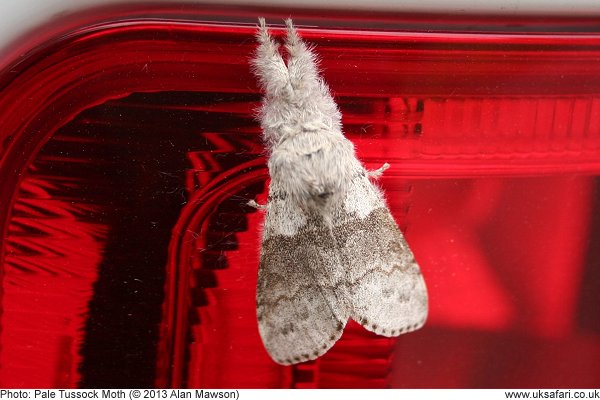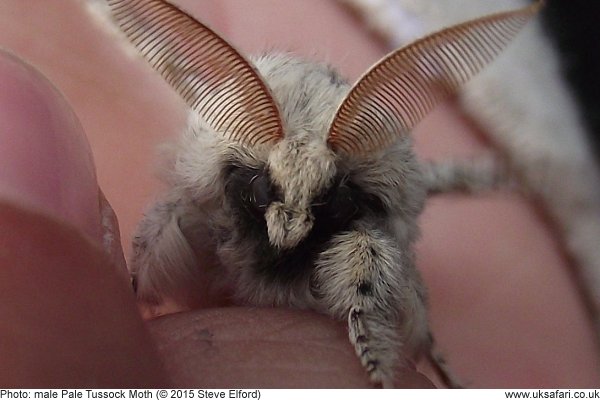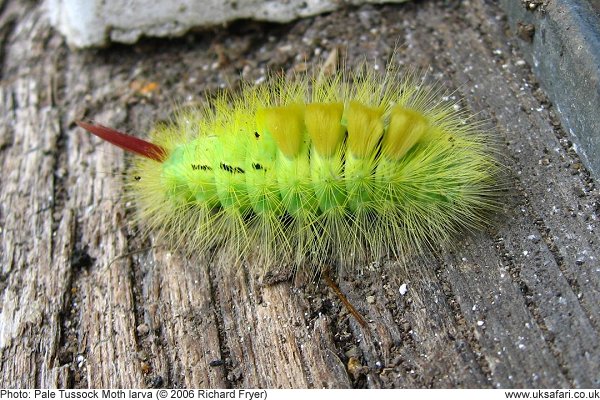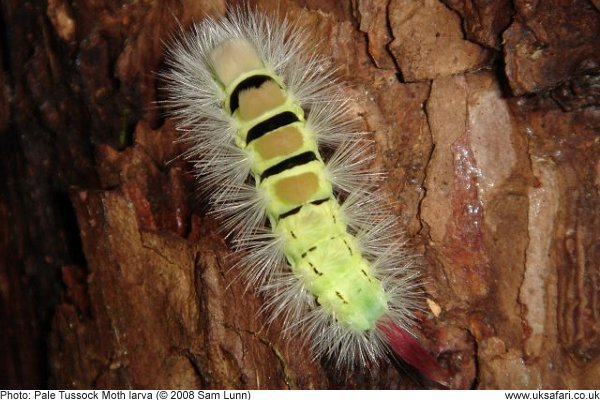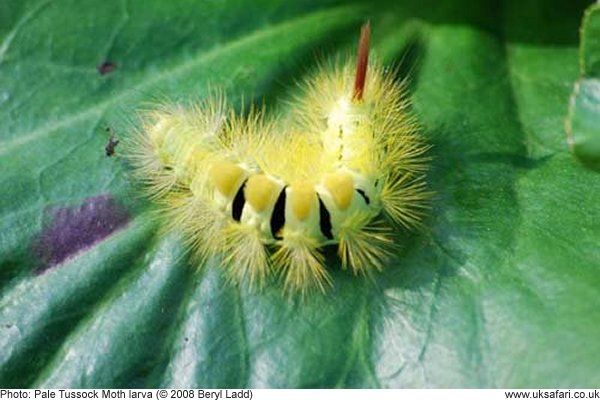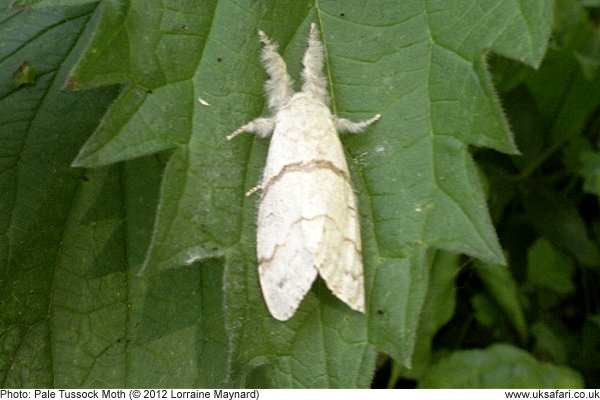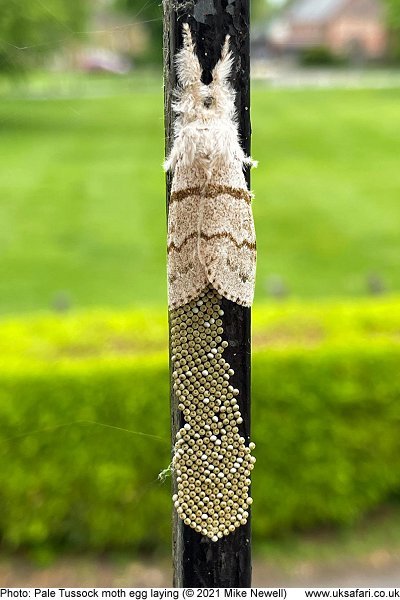 Quick Facts
Quick Facts
Scientific name: Dasychira pudibunda
Size: Wingspan approximately 60mm
Distribution: Found in England and Wales
Months seen: May and June. The caterpillars are found between July and October
Habitat: Woods, parks and gardens
Food: The adult moths don't feed, but the caterpillars eat oak, birch, lime and hop leaves
Special features: Pale Tussocks are pale grey coloured moths with bands of darker grey on the hind wings. The front pair of legs are very hairy and face forwards when resting. The males have feathery antennae which can detect the scent of a female from several hundred metres away. A dark coloured form of the moth is sometimes found around industrial areas.
The hairy green and yellow caterpillars have a black band around each body segment. There are four tufts of yellowish hair on the dorsal area and a tuft of red-brown hair at the tail end. The brightly coloured hairs protect them from birds, and other predators. The only other similar looking caterpillar is the Dark Tussock (Dicallomera fascelina). As it's name suggests the Dark Tussock Moth larva has dark tufts of hair on the dorsal area.
The caterpillars of Pale Tussock moths were commonly known as 'hop dogs' by hop pickers who frequently found them among the crops. They're less likely to be found in hop fields these days due to the use of pesticides.
 Related Pages
Related Pages

 Popular Pages
Popular Pages
Amphibians, Bats, Badgers, Beetles, Birds, Birds of Prey, Bumble Bees, Butterflies, Caterpillars, Creepy-Crawlies, Deadly Spiders, Dolphins, Dragonflies, E-Postcards, False Widow Spiders, Free Newsletter, Frogs, Fungi, Garden Spiders, Glow-Worms, Grey Squirrels, Hedgehogs, House Spiders, Ladybirds, Mammals, Marine Mammals, Moths, Owls, Reptiles, Spiders, Toads, Trees, Wildlife Hospitals
© Copyright 2019 G. Bradley - UK Safari | About Us | Links | Contributors


 Pale Tussock Moths
Pale Tussock Moths